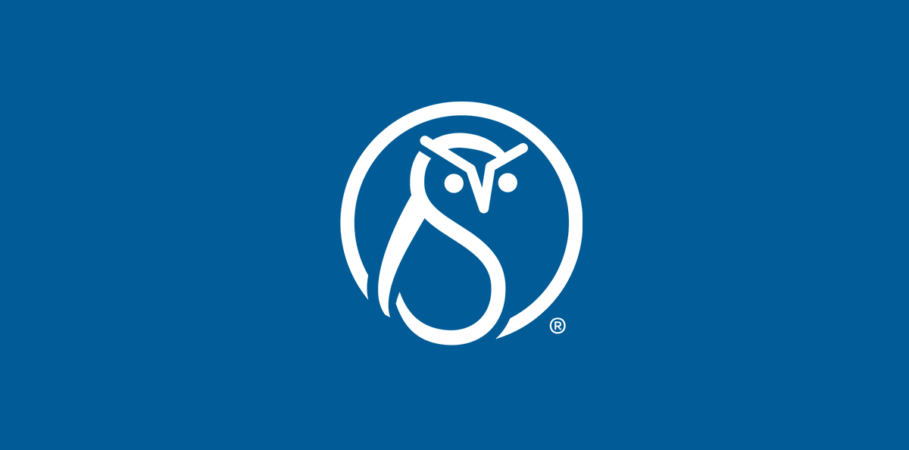Succeeding with DITA adoption in your organization
When a DITA-based workflow is the best choice to support business requirements for your content, you may face the daunting task of convincing leadership to move forward with this enterprise-wide change. Sarah O’Keefe shared practical tips for overcoming common objections to DITA during her session at the AEM Guides user conference.
“Can’t I just use Markdown?”
Though Markdown has its place, issues arise when you need to scale up your Markdown solution for more and more content. It’s difficult to enforce consistency and manage content across many different repositories. If your organization is localizing content for other regions, you’re going to run into big problems.
People say, “Markdown’s free, it’s cheap.” Yeah, it is on day one. But what about day 180? If you run into pushback on Markdown, these are the legitimate aspects that you can talk about.
— Sarah O’Keefe
“My content is special!”
When people voice a sentiment like this during a DITA adoption project, it’s typically in the context of, “My content is special, so you can’t make me put it in a template, DITA, or make it follow any rules.” Rules for structuring content are often seen as constraints on creativity.
First of all, almost always, “My content is special” is not true, right? Yes, you are doing it in a special way, but it is not the correct way, and maybe not the best way. It’s not the approved way, and so on. Is your content actually special? Probably not. Should it be different? Most of the time, probably not.
— Sarah O’Keefe
If a writer legitimately needs something outside of the required content structure, organizations can typically adapt a content model for dealing with edge cases. When somebody says, “My content is special,” most of the time, they’re actually saying, “I don’t want to do this.” As Sarah says, “’I don’t want to do this’ is not a valid business case for not doing a thing when you’re being employed and paid to do the thing.”
“DITA is too hard.”
Adjusting to a new way of writing is intimidating, but what’s really underneath the resistance to change? DITA is too hard compared to what?
If your content creators aren’t used to structured authoring, authoring in DITA will be an adjustment. Behind the claim of being “too hard,” people are often scared of two things:
- Their lack of DITA knowledge.
- Their perception that skills in other tools (such as Word, RoboHelp, FrameMaker, InDesign)—and therefore their role’s value within the organization—are becoming obsolete.
When people push back and say DITA is too hard, the question you have to ask is, are we going to create enough additional value in DITA to make it worth the effort to train our people, bring them up to speed, and give them the skills they need to actually do the content creation, management, and all the rest of it?
— Sarah O’Keefe
Once you establish the value of DITA and clearly outline how you’re going to prepare your people for the change, the next question you need to ask is whether your team is willing to learn the new skills for creating DITA content. Additionally, it’s worth considering if there’s anything you can do to make the software side of things easier.
Now, there are some things we can do to simplify, constrain, configure down, provide templates, and provide a framework to help people create the right content that they need to make. But when you look at these things out of the box, they’re kind of scary. It’s a lot. We can simplify it down to reduce the learning curve and close that gap between where people are and where you need them to be in order to create content successfully. To be successful, part of that is bringing people up to speed, but the other part is bringing the learning curve down. Don’t build the world’s most complicated system just because you can.
— Sarah O’Keefe
“What’s wrong with copy and paste?”
Copy-and-pasting content is much more prevalent than people may realize. Though it seems like an easy and inexpensive trick, there are several drawbacks to copying and pasting content that will cost you in the long run:
- Technical debt. When you copy a piece of content, but then an update is needed, it’s common to forget to update the second, third, fourth, fifth copy, and so on, which results in out-of-sync content.
- Increased volume of content. If you have 20,000 pages of content, but 4,000 of them are the same, you only have 16,000 pages of unique content, and 4,000 pages are duplicates or variations. Every time you copy and paste content, you add another duplicate or variant or a page or topic, and as a result, your content set grows unnecessarily.
- Increased costs for maintaining a large volume of content. The bigger your content set is, the more it costs to manage and maintain it. As you increase your volume, you’re also increasing your total cost of ownership as well as your downstream localization costs.
- Cannibalized search results. When you have duplicates and variants of the same content, you decrease the search performance. If there are eight copies of one topic sitting in your output, all of them are competing for the top spot when your audience is searching for information.
Copying and pasting is really easy in the short term, but it’s not sustainable at scale. Again, if you have a thousand pages, you could probably get away with it for a while. But eventually, you reach that point where you have volume and translations and you need to manage your content more effectively by refactoring it into something as small as possible.
— Sarah O’Keefe
“You want how much funding for this?”
Adopting DITA is expensive: the costs of the technology, the time it takes to adopt it in your organization, and the training required to set content creators up for success. Here’s Sarah’s advice for communicating the value of a DITA project when your leadership experiences sticker shock.
Show a compelling ROI
The easiest place to start is by finding estimates for where your organization saves money by implementing DITA. Don’t miss the hidden costs of staff salaries that are currently being used to manually format content, copy and paste, and so on. Our ROI calculator can help you estimate these cost savings. However, it’s critical that “cutting costs” isn’t your only measure of ROI.
I would caution you then to be careful about only making arguments based on efficiency. That pushes you into a commoditization effect, where the organization is focused on driving costs down and making it cheaper and cheaper. You’ll run into the mindset that, “We can just throw bodies at it and it really doesn’t matter.” Instead, you want to talk about business value, how it will make things better, faster, and easier.
— Sarah O’Keefe
Talk about how DITA provides advanced automation and faster publishing which in turn decreases the time-to-market for a product or service. This allows your company to start collecting money faster.
What about AI?
As you present the business case for structured content, you may hear the rebuttal, “Why do we need all this money for structured content? Can’t we just use AI?”
AI can be a fantastic tool, but as with all tools, it’s only successful if you have a strategy in place that guides you to achieving your organizational goals. Tell your leadership that you need funding for structured content to enable your AI strategy because without it, it won’t be successful.
I don’t know about this for the years after 2024, but right now, if you need money for your structured content project, just skip straight to the bottom [item on the list] and tell them that it will enable your AI, which has the awesome advantage of being true. Additionally, you can discuss how structured content enables better branding and better consistency. But ultimately, right now, your focus should be on enabling [AI]. DITA is the gateway format to AI.
— Sarah O’Keefe
“I don’t see the problem with our current approach.”
Often, the underlying question behind this statement is whether it’s truly valuable to make a change. Someone with this mindset isn’t seeing the value of adopting DITA, and therefore, they’re not willing to risk investing time and resources. Here are some ways to approach this perspective:
- Communicate current limitations. Your leadership may not recognize what your organization is missing without structured content. Show what can’t be done with your current content operations. If you’re a bigger company, check the investor presentation from your CEO that outlines upcoming quarterly or annual goals. Tie what you’re trying to do to the goals they’ve identified. For example, if your company has a goal of increasing global sales by 40% this year, focus on the value that structured content brings to localization. “Right now, it’s a stretch just to translate into our four languages. If you want to localize content for 26 languages, we can’t do that with our current setup.”
- Recognize the risk. As consultants, we’ve seen people hesitate to move forward with DITA adoption projects because the project leaders recognize that if the adoption fails, they are likely going to be fired. Therefore, people become risk averse. They question how much they believe in the necessity of the change and whether the technology can truly deliver the value they’re trying to achieve. If you’re trying to foster DITA adoption in your organization, you have to focus on the risk of not making the change. For example, “If we don’t do this, we’re going to fall further and further behind, and we can’t do A, B, and C.”
The risk mitigation issue is a sort of psychological block that I think people don’t talk about enough. It’s terrifying to stick your neck out, especially in the climate this year, and say, “No, really, we should do this weird thing that nobody’s ever heard of. It’s a CCMS.” Then your leadership says, “But we have other things,” and you have to say, “No, I cannot just put my content in SharePoint and succeed.”
— Sarah O’Keefe
“What about after I adopt DITA?”
Lastly, an audience member raised a question about what to do post-implementation to continue getting support when improvements need to be made. “Implementation is so much like the minimum viable product (MVP). We’re going to do exactly what we need to do to go live with our document set and we’re going to test if that’s going to satisfy the customer first. Then, there are so many afterthoughts and things we want to do better and improve. How do you lobby for that?”
First of all, if you did your implementation—congratulations! Take a minute to realize that that is really great. Then, once you’ve shown some success, maybe you’re getting through some of the KPIs that you identified upfront, then you have the credibility to go back and say, “Hey, what about A? And what if we add B?” And, “I want to do C this year, and it’ll add to D.”
— Sarah O’Keefe
More questions about successfully adopting DITA in your organization? Connect with our team today!
"*" indicates required fields






Amy Kidd
This is just a really excellent article. Thank you for taking the time to put it together and publish it.
Christine Cuellar
Absolutely, we’re glad you enjoyed it!